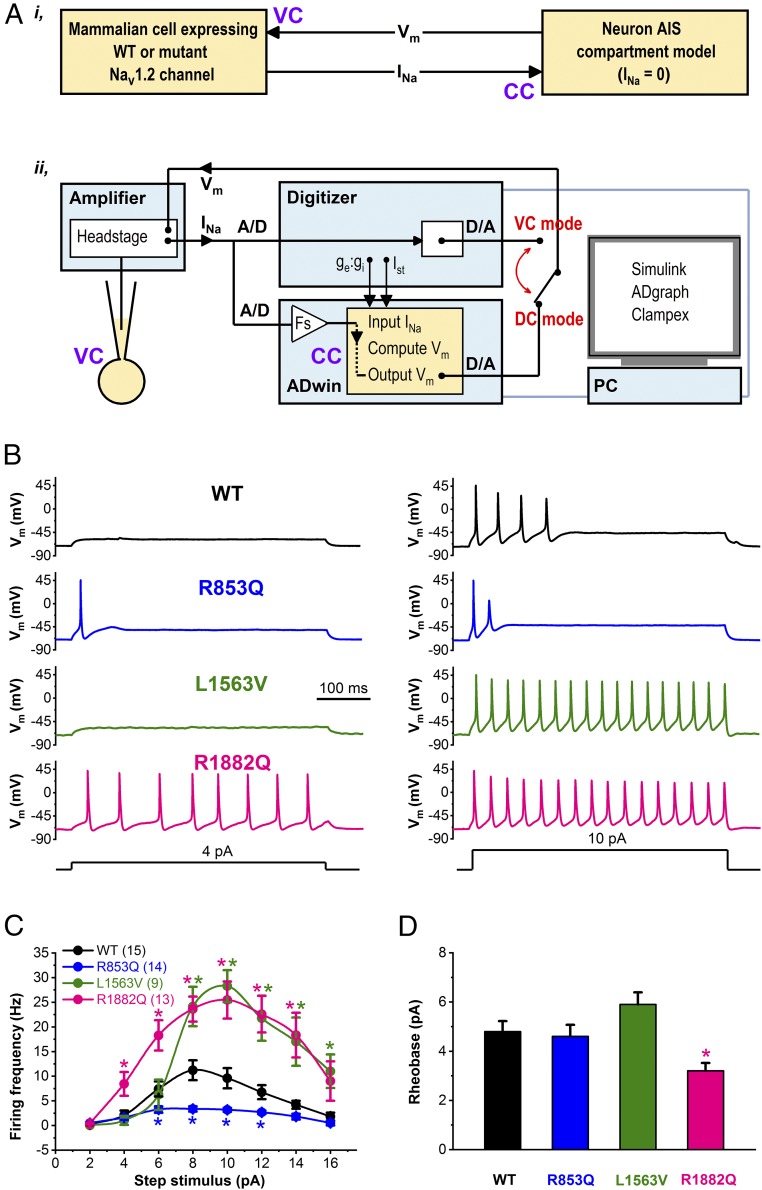Fig. 4.
Dynamic action potential-clamp experiment implementing WT, R853Q, L1563V, or R1882Q INa. (A, i) Schematic representation of the dynamic clamp technique used to effectively replace the in silico INa of the virtual AIS compartment model with INa expressed in a mammalian (CHO) cell. (ii) In dynamic clamp (DC) mode, INa is recorded from a CHO cell, digitized (A/D), scaled (Fs), and continuously applied to the virtual (model) cell as an external current input. The model cell is in current clamp (CC) mode and its Vm is computed in real-time by the PC-controlled ADwin system. The computed Vm is converted into an analog signal (D/A), sent back to the amplifier, and applied as a voltage clamp (VC) command to the CHO cell. Action potential firing in the model cell is triggered either by step stimulus currents (Ist) or synaptic current (ge:gi). The set-up enables switching between dynamic clamp and conventional voltage clamp modes. (B) Dynamic action potential-clamp experiments reveal Nav1.2 channel gain-of-function or loss-of-function. Action potential firing with model cell incorporating wild-type, R853Q, L1563V, or R1882Q INa in response to increasing Ist, in the range between 0 and 16 pA, in 2-pA increments. Representative Vm changes elicited by 4- or 10-pA step currents are shown. (C) Input−output showing the Ist dependence of action potential firing. Data are mean ± SEM; n, number of experiments between parentheses; Note the altered action potential firing of the model cell in the presence of mutant INa compared with wild-type (*P < 0.05). (D) Rheobase (*P < 0.05, compared with wild-type); n, same as in C.

